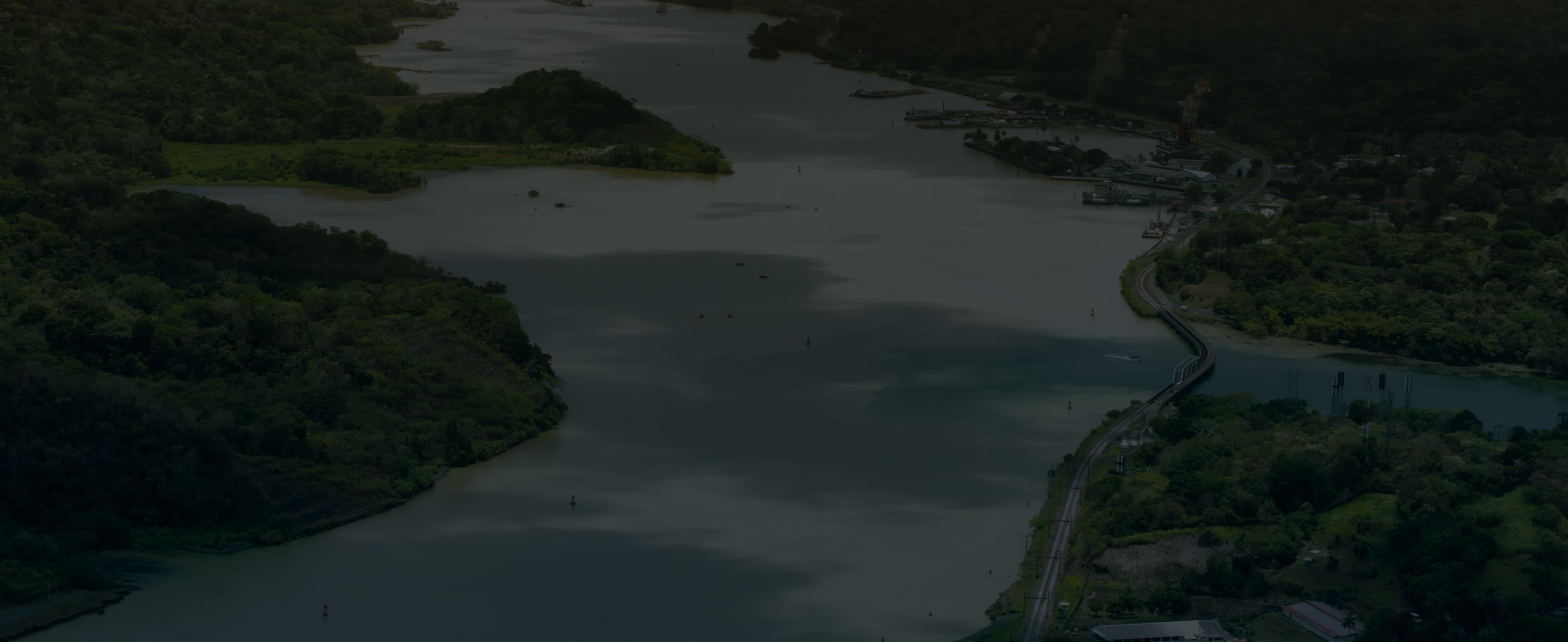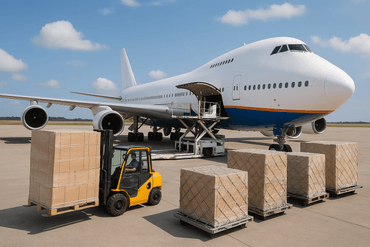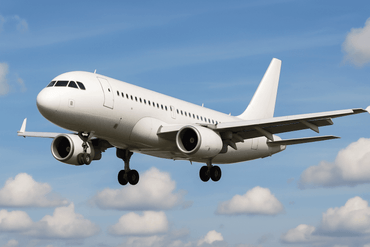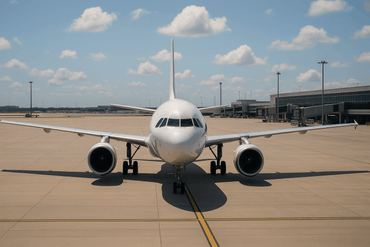
The History of the Panama Canal



If you have ever passed through or witnessed the Panama Canal, you probably know how marvelous it is in terms of scenery and size. But if you dive deeper into its history, you’ll realize that there’s more to it than just appearance. The Panama Canal is considered a marvel in engineering and has decades of stories worth telling.
In this article, we dive deep into the history of the Panama Canal, answer why Panama Canal is so important, and the mark it makes in today’s society.
Where’s the Panama Canal?
The Panama Canal is located in Panama City and connects the Pacific Ocean to the Atlantic Ocean. Comprising a waterway that is 77 kilometers long, it serves as an important gateway for ships that are traveling to South America, saving them more than 12,875 km in their journey.
Panama Canal Creation & History: An Overview
The Panama Canal’s history can be traced back to the 16th century, when Charles V received a suggestion to build a canal in Panama to shorten ship transit times to bring gold from Peru, Asia, and Ecuador to Spanish ports. Following the suggestion, a plan to build the canal was drawn up in 1529, but wars that were going on at that time forced the project to come to a halt. The plan to build the canal was later abandoned when a Spanish bureaucrat found a new route for the transport of gold and riches.
In 1899, the United States Congress thought to observe the potential of a Central American canal by forming the Isthmian Canal Commission. The collective initiated a treaty between the United States and Panama, called the Hay-Bunau-Varilla treaty, which allowed the U.S. to lease a 10-mile section of Panama territory to build the canal.
Panama Canal: When Was It Built?
The building of the Panama Canal was commenced by the United States as a second attempt after France’s failure to build their own canal in the Isthmus of Panama. The construction to build the canal was decided in the year 1906, which required the movement of over 1 million cubic yards of earth. This job involved more than 25,000 workers daily to complete the building of construction facilities.
When Was the Panama Canal Finished?
The project was completed on August 15, 1914, and was opened for commercial use.
How Long Did the Panama Canal Take to Build?
Because of the wide stretch of the Panama Canal, it took workers about 8 full years to complete construction. The project moved a total of 240 million cubic yards of earth, hence, the Panama canal cost reached a total of $336,650,000 US dollars.
What Year Did the Panama Canal Open?
The Panama Canal was opened for utilization on August 15, 1914. This was formalized through a dedication that was held a little less than 6 years after on July 12, 1920. The United States enjoyed sole ownership of the Panama Canal from 1914 to 1979.
After that, control of the canal was passed to Panama via a U.S. and Panama joint agency called the Panama Canal Commission. In 1999, Panama was granted ownership and complete control of the canal under the administration of the Panama Canal Authority.
The Panama-Pacific International Exposition
The Panama-Pacific International Exposition was created by San Francisco to celebrate the opening of the Panama Canal. It was held in 1915. The exposition also celebrated the merging of the East and West regions and hoped for an improvement in international relations, which was hoped to foster an increase in commerce opportunities for the interested countries.
Panama Canal Expansion
Initially, the Hay-Bunau-Varilla treaty stated that the U.S. would compensate Panama $10 million before the project and granted the latter an annuity amounting to $250,000 to begin on the year 1913. In 1939, however, the annuity was increased to $434,000 following the creation of a transisthmian highway.
In the same year, 1939, the United States authorized the construction of more locks, however, the plan was put to a pause due to the rising tensions of World War II. It wasn’t until 1955 when the U.S. was able to expand the Panama canal with a high-level bridge, which coincidentally increased the canal’s income to $1,930,000. In 1969, the Galliard section of the canal was expanded to allow for two-way traffic.
To this day, the Canal is still being developed and expanded. As of writing, the following developments have been made:
- Improvement of Panamax ships to fit through 110-foot locks
- Larger vessels to carry heavier and more cargo
- Expansions to reduce traffic jams at the canal
- Opening of new locks in the year 2016, which doubled the capacity of the canal
What Was the Purpose of the Panama Canal?
The Panama canal is one of the most strategic artificial waterways in the world that serves an important purpose for cargo transport. It cuts down the voyage of ships by providing a passageway that directly brings them to South America. This reduced travel time by over 15,000 kilometers.
Routes to North America and other South American ports have also fostered easier travel through the Panama Canal, which saved over 6,500 kilometers. On the other hand, voyages from East Asia and Europe headed to Australia were reduced by 3,700 kilometers with the use of the Panama Canal.
What is the Panama Canal Used For?
Today, the Panama Canal is used for cargo transport, primarily by the import and export industries. By allowing easier routes and faster voyages, it serves as an important gateway to access different areas of the world.
Why is the Panama Canal Important?
The Panama Canal’s importance lies in its advantages for import and export, as well as international trade relations. It serves both commercial and military importance.
Commercial Importance
The Panama Canal allows for cheaper and easier methods to transport cargo and commercial goods between the Pacific and Atlantic Oceans. It eliminated the need for ships to sail around Cape Horn and the southernmost parts of South America to reach their destinations. From a voyage that would take 67 days to cover 12,000 miles, the Canal paved the way for a voyage of only eight to 10 hours, covering only 8,000 miles.
Military Importance
The Panama Canal had military importance in the 1900s when the U.S. provided funds and a naval blockade for Panama to use for its revolution. This led to Panama’s independence, which allowed the U.S. to form a treaty with them to build the canal. In 1999, military presence in the Panama Canal Zone was strong, especially when the U.S. military bases were closed.
Up until today, the Panama Canal is still used to transport military water vessels.
How Did the Panama Canal Impact the World?
The Panama Canal has been hailed as one of the very few projects that changed the face of the earth and created an inter-oceanic route of transport. From 1914 up until today, it is one of the most important waterways that fosters international trade and the import and export industry.
- 1. Where’s the Panama Canal?
- 2. Panama Canal Creation & History: An Overview
- 3. Panama Canal: When Was It Built?When Was the Panama Canal Finished?How Long Did the Panama Canal Take to Build?What Year Did the Panama Canal Open?The Panama-Pacific International Exposition
- 4. Panama Canal Expansion
- 5. What Was the Purpose of the Panama Canal?What is the Panama Canal Used For?
- 6. Why is the Panama Canal Important?Commercial ImportanceMilitary Importance
- 7. How Did the Panama Canal Impact the World?
Related Articles


